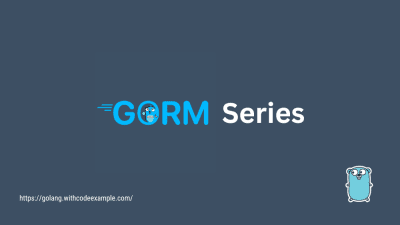Understanding the go mod init Command in Go
- With Code Example
- November 21, 2023


The go mod init command is a fundamental part of the Go Modules system, introduced in Go 1.11. It is used to create or initialize a Go module, which is a way to manage dependencies and versioning in your Go projects. Here’s all you need to know about go mod init:
1. Initializing a Go Module:
- The primary purpose of
go mod initis to initialize a Go module in your project. - A Go module is a collection of Go packages that are versioned together. It defines the project’s dependencies and their versions, ensuring reproducible builds.
2. Usage:
- To create or initialize a Go module, open your terminal and navigate to your project’s root directory.
- Run the
go mod initcommand followed by the module path. The module path is typically the URL of the repository where your code is hosted.
go mod init example.com/myproject
Here, example.com/myproject is the module path.
3. Generating go.mod:
- Running
go mod initgenerates ago.modfile in your project directory. This file contains information about your module and its dependencies.
4. go.mod Content:
- The
go.modfile includes:- Module path: The path you provided in the
go mod initcommand. - Go version: The version of Go the module is compatible with.
- Dependencies: A list of direct dependencies, including their module paths and versions.
- Module path: The path you provided in the
5. Example go.mod File:
Here’s an example of what a go.mod file might look like:
module example.com/myproject
go 1.17
require (
github.com/somepkg/somepkg v1.2.3
github.com/anotherpkg/anotherpkg v0.4.0
)
6. go.sum File:
- Along with
go.mod, ago.sumfile is also generated. This file contains checksums of specific versions of the module’s dependencies. It helps ensure the integrity of downloaded modules.
7. Updating Dependencies:
- After initializing a Go module, you can use commands like
go getto add new dependencies or update existing ones. Running these commands updates thego.modfile to include the latest versions of the dependencies.
8. Versioning:
- Go Modules use semantic versioning (semver) to manage dependencies. In the
go.modfile, you specify the minimum version of a dependency that your module requires, and Go Modules will attempt to use the latest compatible version.
9. Vendor Directory:
- By default, Go Modules store dependencies in a
vendordirectory within your project. This directory contains a copy of the source code of the module and its dependencies.
10. Reproducible Builds:
- Go Modules ensure reproducible builds by recording the specific versions of dependencies in the `go.mod` file and verifying them using the `go.sum` file.
In summary, go mod init is the command used to initialize a Go module, which is essential for managing dependencies and ensuring the versioning of packages in your Go project. It provides a robust mechanism for reproducible and predictable builds.


Tags
Related Posts

Implementing NoSQL with Golang- A Step-by-Step Guide
Among the essentials of software engineering of the present age, there are two considerable qualities: adaptability and scalability. Enters NoSQL databasesand Golang, a dynamic duo which is on their way to change the world of developmentperpetually.





